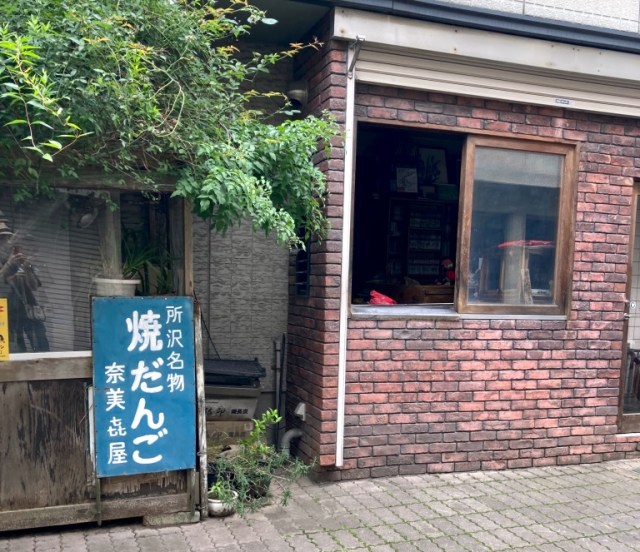
But that one item is all Tokorozawa’s Namikiya needed to win our heart and stomach.
Tokorozawa isn’t a particularly glamorous town. Located in Saitama Prefecture and sitting on the outer edges of the greater Tokyo area, it’s pretty far from the big-name attractions of the capital, yet not yet far enough into the countryside to be a major outdoor leisure destination.
But some of the best parts of being in Japan are the discoveries you make on the sleepy side streets of its more tranquil neighborhoods, and that brings us to Namikiya.
The simple brick storefront, built into the first floor of a house, is rustically charming, but doesn’t do all that much to catch the eye. We might have walked right on by, except that we noticed the blue sign with “Namikiya – Tokorozawa’s Famous Yakidango” written on it.
▼ This sign
Yakidango is a combination of dango, Japanese dumplings, and yaki, which in this case means “grilled.” Skewered and slathered in a salty sweet glaze, yakidango have been a beloved snack for generations, and Namikiya makes theirs from scratch, according to another sign which also lists their price, just 110 yen (US$0.80) per skewer, and yakidango are the one and only thing Namikiya sells.
There’s a minimum order size of five skewers, but still, that’s a bargain. We walked up to the counter and asked for five, but the owner, Namiki-san, didn’t hand us a pack of pre-cooked dumplings. The shop doesn’t grill our dango until you order them, to ensure they’re as soft and flavorful as they can be.
With our order placed, Namiki-san produced a piece of charcoal, placed it underneath the grill, and lit it, using the breeze from an electric fan to help get the fire going. He then placed five dango skewers on the grill, periodically rotating them with his dexterous fingers as they cooked and fanning the flames with an uchiwa fan that he held in his other hand.
Once they were suitably grilled, he plucked the skewers off the grill and gave them each a few dunks into a container of the soy sauce-based glaze, placed them on a strip of kyogi (wood sliced to a paper-like thinness), wrapped up the package, and handed the freshly cooked treats to us.
▼ With four bite-sized dango to a skewer, the minimum order gives you a total of 20.
Speaking of the wrapping, on the inside is a retro illustration of a dango chef hard at work,
The line of text at the very bottom of the paper says “Dedicated to yakidango for 65 years.” “Wow, so Namikiya has been in business since 1958?” we asked Namiki-san, who surprised us by replying “Oh, we did the design for that paper a while ago. We’ve been in business for about 70 years now.”
“I took over the business from my dad,” he explained. “For the first 50 years, our shop was over near where the Tocotoco Square Tokorozawa [shopping center] is, and then we relocated to this spot 20 years ago.”
We also learned a bit more about why Namikiya’s sign says Tokorozawa is known for its yakidango. Back in the old days, farmers were having trouble making flooded rice paddies in the area, so they switched to raising varieties of rice that can be grown on dry land. When steamed, the flavor wasn’t considered to be on par with grown-in-paddies varieties, but Tokorozawa’s rice tasted just fine when it was made into rice flour dumplings and roasted. These days, a lot of the old yakidango shops in the area have closed down for good, but Namikiya is still surviving.
As for how Namikiya’s dango taste, they’re great. The flavor balance is more towards the salty than the sweet, but both sensations are present, so they’re a snack that just about anyone can enjoy, and also afford, given their very low price. And as a locally made traditional Japanese sweet, they’re arguably the perfect thing to pick up before or after visiting the nearby “Totoro Forest,” the real-world woodlands that inspired the setting of the Studio Ghibli anime classic.
Speaking of prices, we asked Namiki-san if the rising costs of ingredients in Japan’s increasingly inflationary economy was making it hard for him to do business, and if he feels like he’ll soon have to start charging customers more, to which he replied:
“Nope, not really. As long as we can earn enough to keep the shop going, that’s enough.”
The response was simple, soothing, and warm, just like the dango Namikiya makes.
Shop information
Namikiya / 奈美喜屋
Address: Saitama-ken, Tokorozawa-shi, Miyuki-cho 6-5
埼玉県所沢市御幸町6-5
Open 10 a.m.-6 p.m.
Photos ©SoraNews24
● Want to hear about SoraNews24’s latest articles as soon as they’re published? Follow us on Facebook and Twitter!

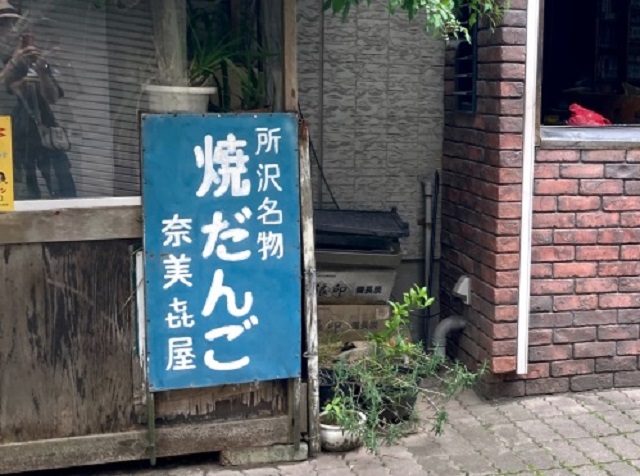
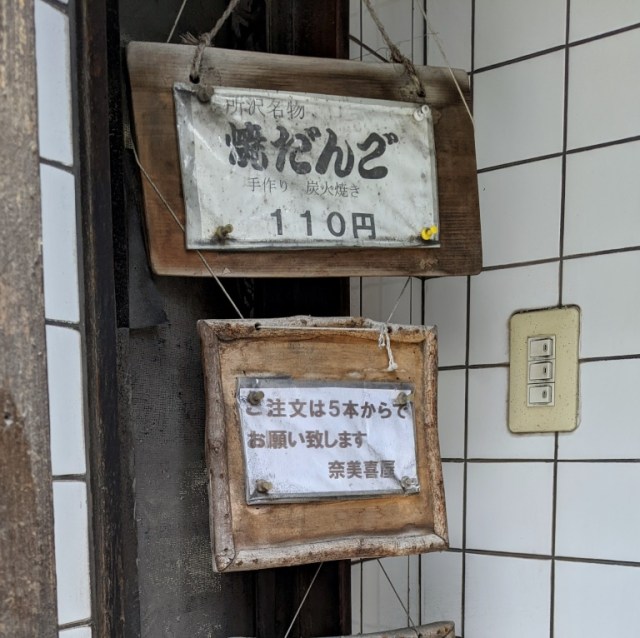


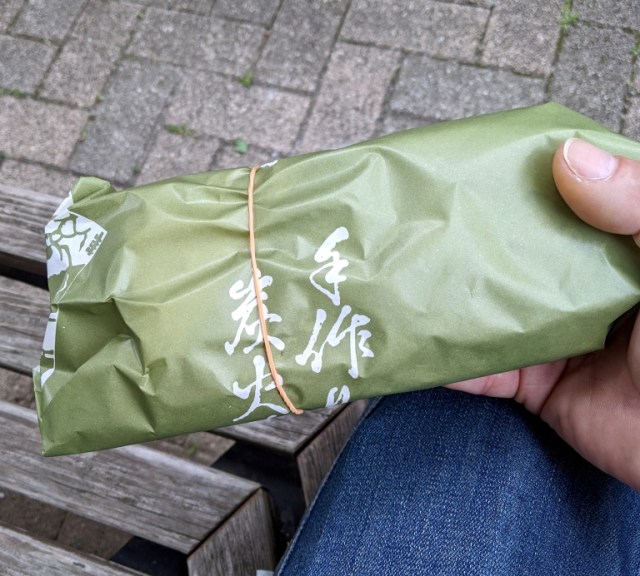
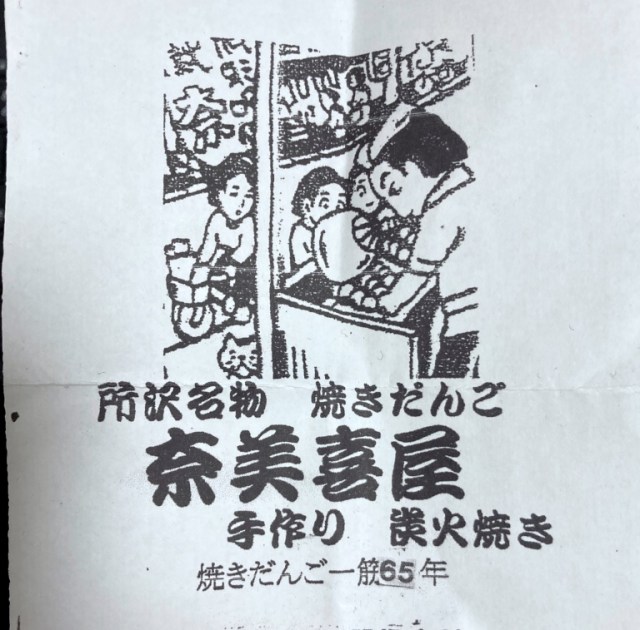
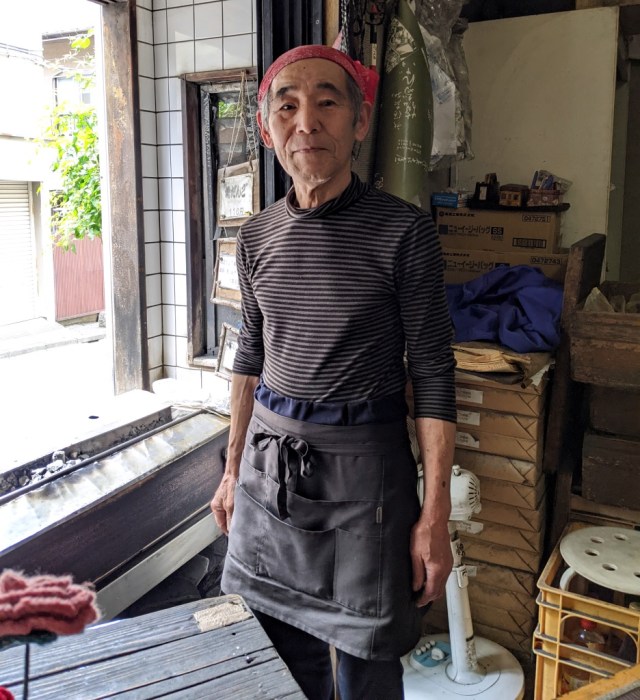
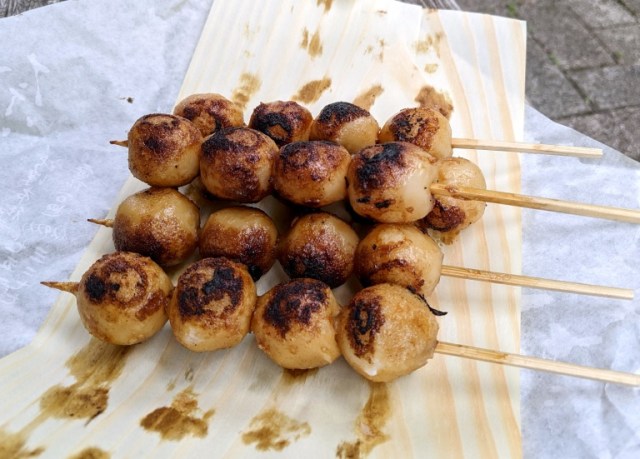
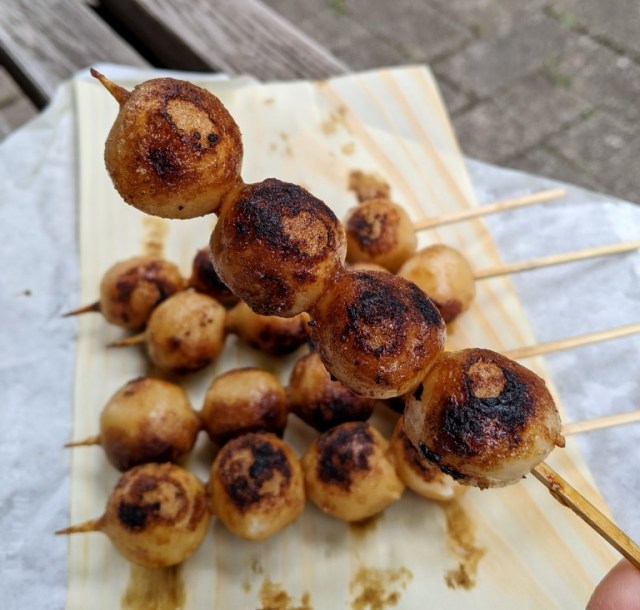
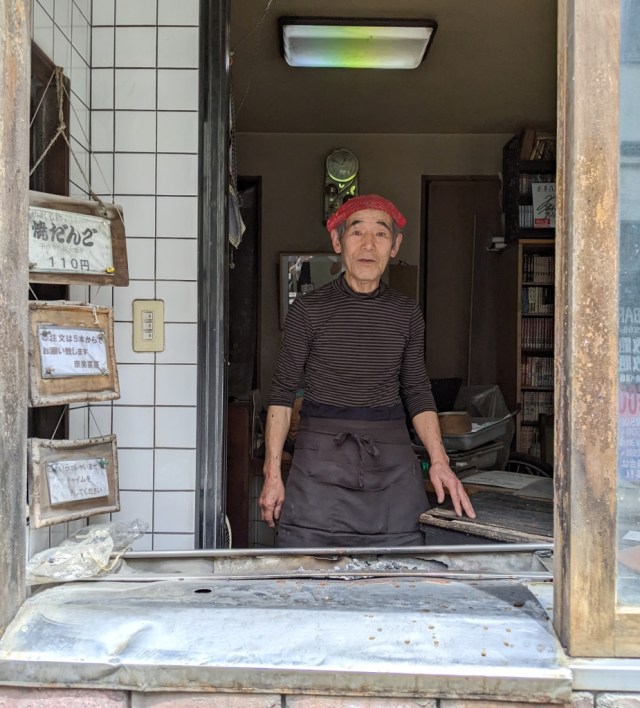
 Tokyo pub lets you grill traditional Japanese dessert right at your table in all-you-can-eat deal
Tokyo pub lets you grill traditional Japanese dessert right at your table in all-you-can-eat deal Japanese netizen goes ham for hanami with supersized dango and we live for it【Photos】
Japanese netizen goes ham for hanami with supersized dango and we live for it【Photos】 Starbucks Japan unveils new Sakura Frappuccino for cherry blossom-viewing season 2024
Starbucks Japan unveils new Sakura Frappuccino for cherry blossom-viewing season 2024 This pork-wrapped Japanese dessert recipe is outside the box and out of this world【Recipe】
This pork-wrapped Japanese dessert recipe is outside the box and out of this world【Recipe】 Watermelon Dango: Traditional Japanese dessert gets a new look for summer with an amazing flavour
Watermelon Dango: Traditional Japanese dessert gets a new look for summer with an amazing flavour Foreigner’s request for help in Tokyo makes us sad for the state of society
Foreigner’s request for help in Tokyo makes us sad for the state of society McDonald’s Japan’s new pancake pie is a taste sensation
McDonald’s Japan’s new pancake pie is a taste sensation Bad tourist manners at Mt Fuji Lawson photo spot prompts Japanese town to block view with screens
Bad tourist manners at Mt Fuji Lawson photo spot prompts Japanese town to block view with screens One of Japan’s oldest castles now lets travelers spend night on the grounds, drink in its keep
One of Japan’s oldest castles now lets travelers spend night on the grounds, drink in its keep Studio Ghibli unveils new goods that tip the hat to The Cat Returns
Studio Ghibli unveils new goods that tip the hat to The Cat Returns Spring Mos Burger x SpongeBob lucky bags bring us fun under the sun【Photos】
Spring Mos Burger x SpongeBob lucky bags bring us fun under the sun【Photos】 FUK COFFEE?!? Japanese cafe has a perfectly innocent reason for its startling-looking name
FUK COFFEE?!? Japanese cafe has a perfectly innocent reason for its startling-looking name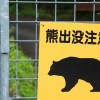 Bear attacks car in Japan, breaks windshield with its paw【Video】
Bear attacks car in Japan, breaks windshield with its paw【Video】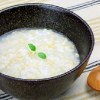 What do you eat when you catch a cold? We asked 11 of our Japanese reporters
What do you eat when you catch a cold? We asked 11 of our Japanese reporters Mikado Coffee is a 76-year-old coffee chain with a major celebrity connection
Mikado Coffee is a 76-year-old coffee chain with a major celebrity connection Red light district sushi restaurant in Tokyo shows us just how wrong we were about it
Red light district sushi restaurant in Tokyo shows us just how wrong we were about it Japanese city loses residents’ personal data, which was on paper being transported on a windy day
Japanese city loses residents’ personal data, which was on paper being transported on a windy day McDonald’s new Happy Meals offer up cute and practical Sanrio lifestyle goods
McDonald’s new Happy Meals offer up cute and practical Sanrio lifestyle goods Japanese ramen restaurants under pressure from new yen banknotes
Japanese ramen restaurants under pressure from new yen banknotes Ghibli Park now selling “Grilled Frogs” from food cart in Valley of Witches
Ghibli Park now selling “Grilled Frogs” from food cart in Valley of Witches Two things to do, and two things not to do, when leaving a traditional Japanese inn
Two things to do, and two things not to do, when leaving a traditional Japanese inn New definition of “Japanese whiskey” goes into effect to prevent fakes from fooling overseas buyers
New definition of “Japanese whiskey” goes into effect to prevent fakes from fooling overseas buyers Our Japanese reporter visits Costco in the U.S., finds super American and very Japanese things
Our Japanese reporter visits Costco in the U.S., finds super American and very Japanese things All-you-can-drink Starbucks and amazing views part of Tokyo’s new 170 meter-high sky lounge
All-you-can-drink Starbucks and amazing views part of Tokyo’s new 170 meter-high sky lounge More foreign tourists than ever before in history visited Japan last month
More foreign tourists than ever before in history visited Japan last month New Pokémon cakes let you eat your way through Pikachu and all the Eevee evolutions
New Pokémon cakes let you eat your way through Pikachu and all the Eevee evolutions Disney princesses get official manga makeovers for Manga Princess Cafe opening in Tokyo
Disney princesses get official manga makeovers for Manga Princess Cafe opening in Tokyo French Fries Bread in Tokyo’s Shibuya becomes a hit on social media
French Fries Bread in Tokyo’s Shibuya becomes a hit on social media Sales of Japan’s most convenient train ticket/shopping payment cards suspended indefinitely
Sales of Japan’s most convenient train ticket/shopping payment cards suspended indefinitely Sold-out Studio Ghibli desktop humidifiers are back so Totoro can help you through the dry season
Sold-out Studio Ghibli desktop humidifiers are back so Totoro can help you through the dry season Japanese government to make first change to romanization spelling rules since the 1950s
Japanese government to make first change to romanization spelling rules since the 1950s Ghibli founders Toshio Suzuki and Hayao Miyazaki contribute to Japanese whisky Totoro label design
Ghibli founders Toshio Suzuki and Hayao Miyazaki contribute to Japanese whisky Totoro label design Doraemon found buried at sea as scene from 1993 anime becomes real life【Photos】
Doraemon found buried at sea as scene from 1993 anime becomes real life【Photos】 Tokyo’s most famous Starbucks is closed
Tokyo’s most famous Starbucks is closed One Piece characters’ nationalities revealed, but fans have mixed opinions
One Piece characters’ nationalities revealed, but fans have mixed opinions We asked a Uniqlo employee what four things we should buy and their suggestions didn’t disappoint
We asked a Uniqlo employee what four things we should buy and their suggestions didn’t disappoint Adorable, edible dog buttholes are part of this new take on traditional Japanese sweets
Adorable, edible dog buttholes are part of this new take on traditional Japanese sweets Starbucks releases new sakura Frappuccino in Japan, but does it taste as good as it looks?
Starbucks releases new sakura Frappuccino in Japan, but does it taste as good as it looks? Baymax mitarashi dango: The best rice dumplings you can buy or Disney-themed choking hazard?
Baymax mitarashi dango: The best rice dumplings you can buy or Disney-themed choking hazard? Starbucks has a mochi ice cream Frappuccino? New hanami dango hack goes viral in Japan
Starbucks has a mochi ice cream Frappuccino? New hanami dango hack goes viral in Japan We try savory doughnuts inspired by miso, seaweed rice crackers and more
We try savory doughnuts inspired by miso, seaweed rice crackers and more Grill everything indoors and all at once with this crazy Japanese yakitori skewer cooking gadget
Grill everything indoors and all at once with this crazy Japanese yakitori skewer cooking gadget Harvest moon brings harvest sweets in Japan, here are a few you can try!
Harvest moon brings harvest sweets in Japan, here are a few you can try! Is Starbucks Japan’s hot Hanami Sakura Cream better than the Frappuccino?
Is Starbucks Japan’s hot Hanami Sakura Cream better than the Frappuccino? You can buy, and eat, a grilled sparrow on the streets of Kyoto, so we did【Taste test】
You can buy, and eat, a grilled sparrow on the streets of Kyoto, so we did【Taste test】 The strange part of Japan where “grilled chicken” doesn’t always mean “chicken”
The strange part of Japan where “grilled chicken” doesn’t always mean “chicken” We bought a sausage egg roll maker because of social media, but was it worth it?
We bought a sausage egg roll maker because of social media, but was it worth it? Häagen-Dazs’ awesome mochi ice creams with black sugar syrup and sweet miso glaze are coming back
Häagen-Dazs’ awesome mochi ice creams with black sugar syrup and sweet miso glaze are coming back Insanely detailed 900-plus-piece Japanese model kit is…a 1:1-scale sesame dumpling【Photos】
Insanely detailed 900-plus-piece Japanese model kit is…a 1:1-scale sesame dumpling【Photos】 “Grilled corn” and “gyoza” flavored shaved ice sold at Saitama cafe
“Grilled corn” and “gyoza” flavored shaved ice sold at Saitama cafe Is this spicy Japanese condiment the secret to making desserts more delicious?【Taste test】
Is this spicy Japanese condiment the secret to making desserts more delicious?【Taste test】 We became Japanese sweet chefs for a day with Popin Cooking’s DIY wagashi set
We became Japanese sweet chefs for a day with Popin Cooking’s DIY wagashi set
Leave a Reply